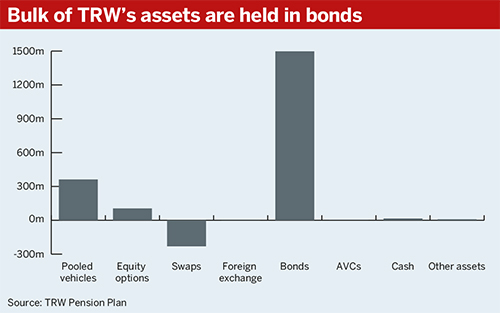Trustees for the pension plan of automotive company TRW have added to the scheme's high-yield credit allocation, but opinions on the outlook for this asset class are divided.
High-yield credit has been attracting institutional investors looking to diversify their portfolios and access attractive risk-adjusted returns.
Right now, I would be very cautious about going into high yield
James Trask, LCP
Other schemes that have allocated to this asset class over the past year include Centrica Combined Common Investment Fund and the London Borough of Newham Pension Fund.
During the year ending March 2017, the £1.8bn TRW scheme allocated £50m to a global high-yield credit mandate managed by Baring Global Investments.
“This was funded from the sale of UK property assets and cash proceeds,” according to the scheme’s latest annual report.
The move followed a new £100m high-yield credit allocation to Babson Capital during the previous year. This was funded by a £25m reduction in the scheme’s European loans mandate, £35m from an asset-backed securities mandate and £40m from cash proceeds.
Inflows remain buoyant
High-yield bonds provide more opportunities to benefit from a greater level of upside if the company is on an improving credit trajectory, said Abigail Mardlin, director, global credit at BMO Global Asset Management.
Mardlin said high-yield has experienced a period of steady positive returns supported by prolonged market volatility.
Inflows into the asset class have remained buoyant, supporting prices, while stability and an increase in market size have improved the overall liquidity, she said.
Mardlin added that all of this “has provided a virtuous circle, which has resulted in the increasing popularity of the asset class”.

Aside from the overall central bank policy environment – where there are expectations for interest rates to increase further – geopolitical concerns can be a big challenge when it comes to the high-yield market.
She highlighted uncertainties for businesses in the UK because of Brexit, but also in the US under the new administration.
“The turmoil of the Trump administration creates ongoing uncertainty, namely around which of his policies will actually be enacted,” she said, adding that other geopolitical hotspots include the US’s relationship with North Korea and Russia.
“Putting a price on political risk is notoriously difficult as it is hard to predict,” she said, but added that given where spreads are, “the high-yield market is potentially exposed to an escalation in one of these exogenous risks”.
Schemes should be wary
James Trask, partner at consultancy LCP, has a less positive view of high-yield bonds. Over the past 20 to 30 years, high yield has delivered similar returns to equities with less volatility, “so it sounds great”, he said.
However, “right now, I would be very cautious about going into high yield”. Trask explained that most credit assets appear to be quite expensive because investors are searching for yield, driving up prices.
“Yields you’re getting nowadays by going into high yield are at all-time lows,” he said.
He noted that the US market is slightly more promising than the European market, with yields at around 5.5 per cent in the US compared with just over 2 per cent in Europe.
Centrica drills for returns with high-yield allocation
 The Centrica Combined Common Investment Fund, which manages holdings for the energy giant’s pension schemes, has trimmed its exposure to corporate bonds, reweighting its portfolio towards high-yield debt.
The Centrica Combined Common Investment Fund, which manages holdings for the energy giant’s pension schemes, has trimmed its exposure to corporate bonds, reweighting its portfolio towards high-yield debt.
“In fact, you can earn more by investing in US investment grade than you can by investing in European high yield at the moment,” he said.
Trask said people will be buying it because it has delivered good returns and “it is continuing to deliver steady income-like returns in an environment which seems to be quite benign”.
However, if expectations for defaults pick up, and investors get worried, “this asset class could fall and you could lose money, because there’s not much upside from here but there’s a lot of downside”, he added.
For schemes that already have a high-yield bond allocation, and have done for some time, Trask says they should be thinking very carefully about whether they still want to have that allocation.
“Whether it’s high-yield bonds, whether it’s loans, all these things are effectively priced to perfection. So there is a risk that when sentiment turns… that you’ll see widespread defaults,” Trask added.














